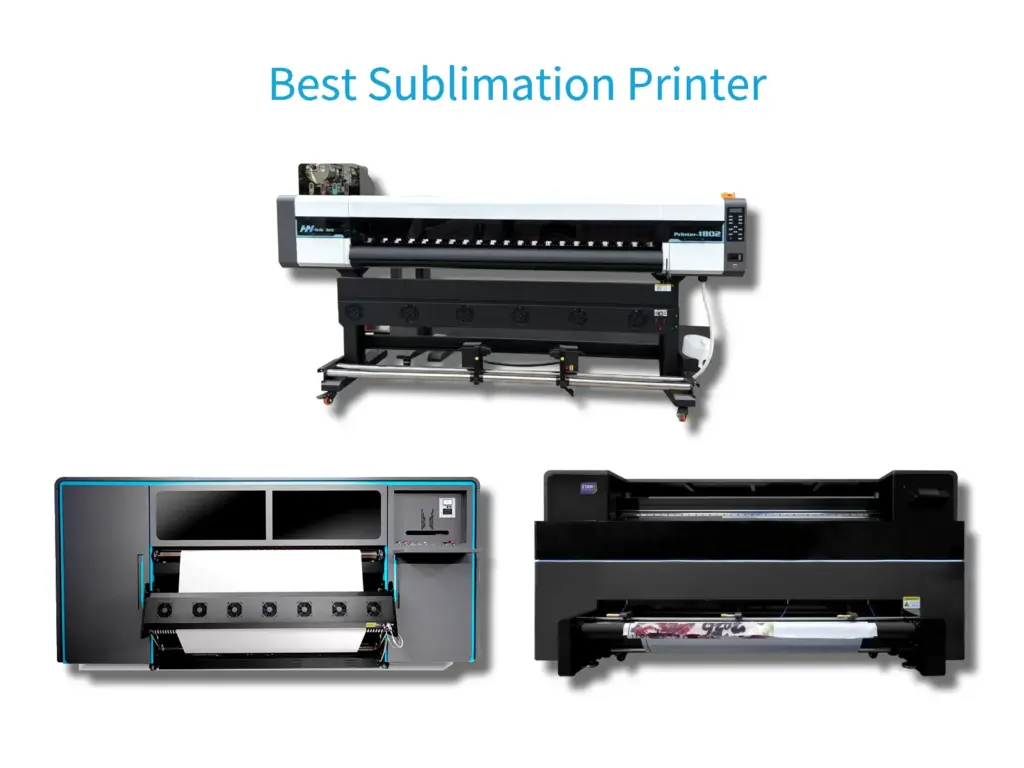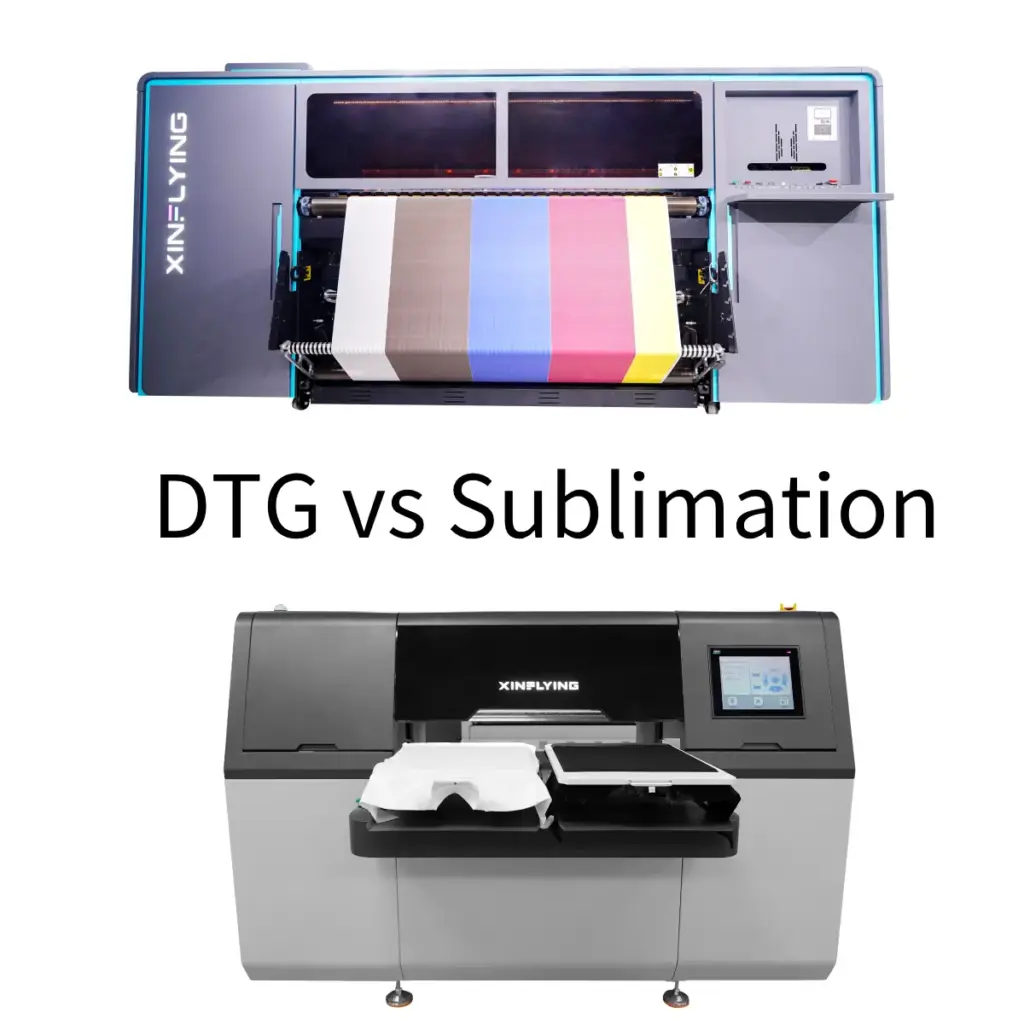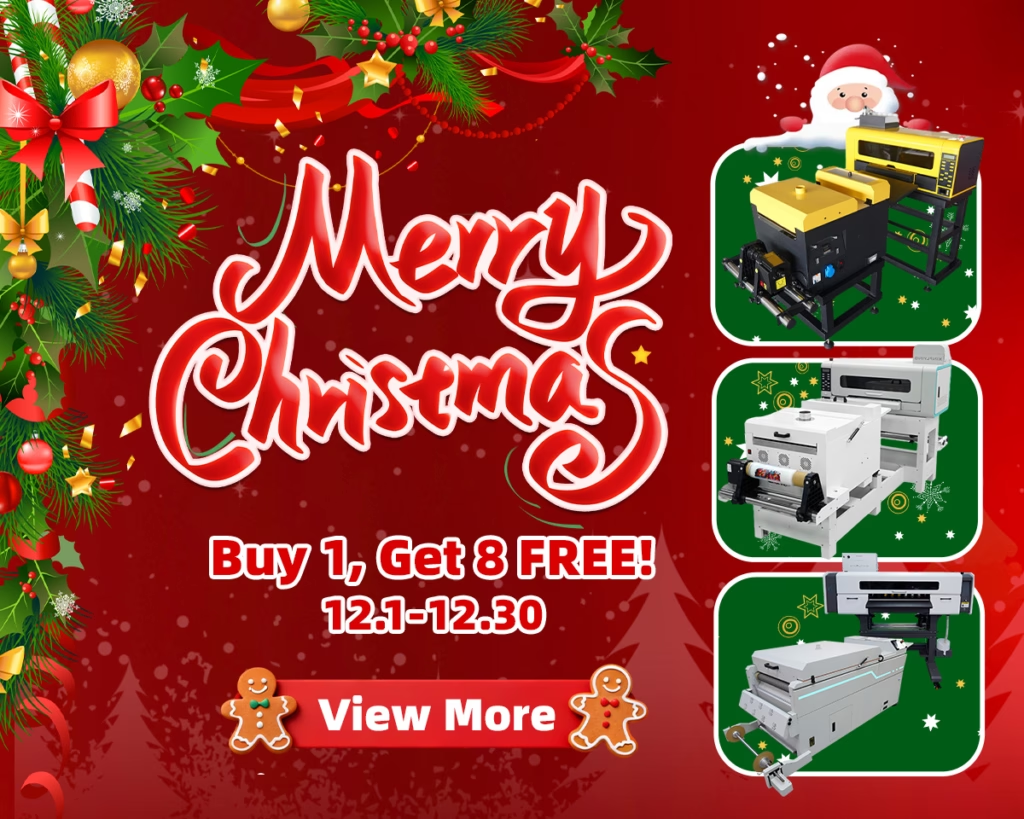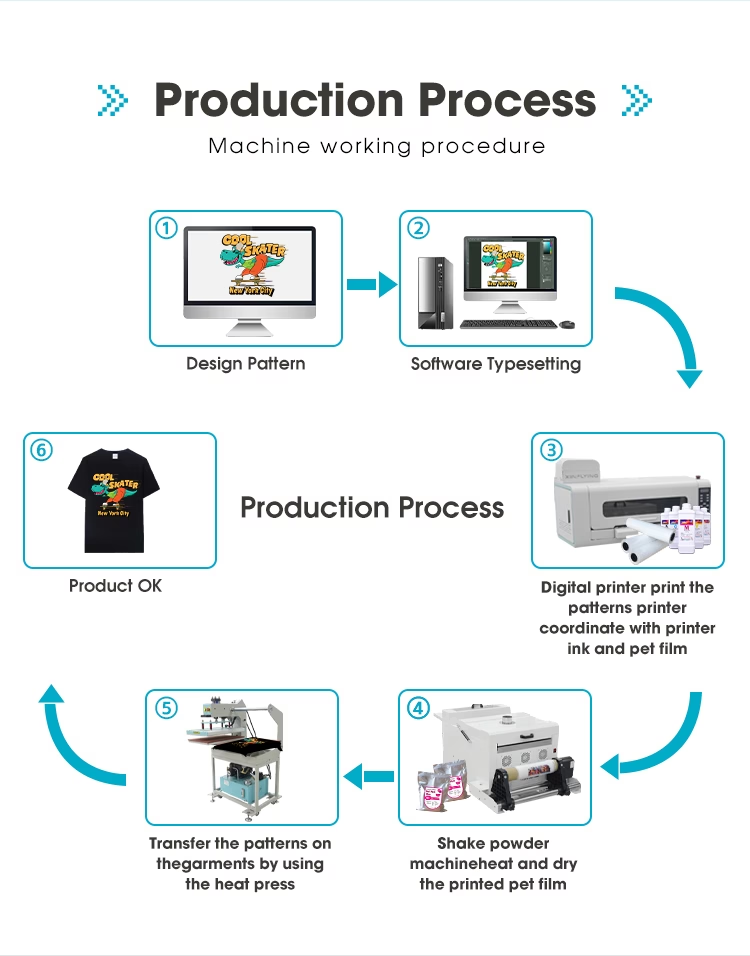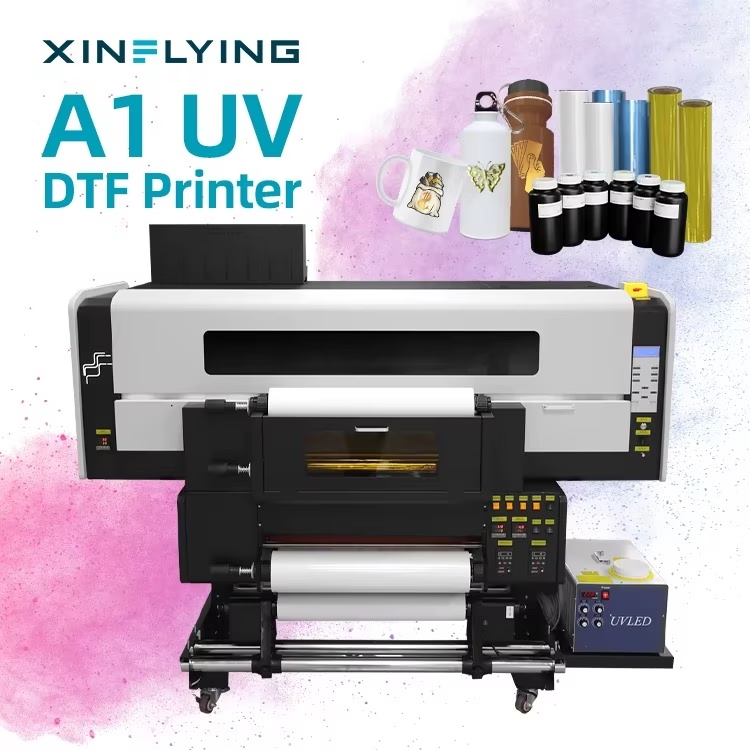
Kilde: https://www.indiamart.com
DTF-print er blevet mere og mere populært i beklædnings- og tekstiltrykindustrien, da det giver flere fordele i forhold til traditionel sublimeringsprint. DTF udskrivning giver mulighed for udskrivning på en bredere vifte af stoffer og producerer mere levende og detaljerede print. Disse fordele gør det til en tiltalende mulighed for virksomheder, der har til formål at udvide deres produktudbud og øge produktionseffektiviteten.
Denne artikel vil undersøge fordelene ved at bruge enDTF printer til forretningsudskrivningsbehov, som omfatter muligheden for at printe på både naturlige og syntetiske stoffer, Hurtigere omdrejningstider, og mere effektiv produktion. Derudover, artiklen vil diskutere de væsentlige faktorer, der skal overvejes, når du vælger en DTF-printer, såsom udskriftskvalitet, hastighed og produktionskapacitet, blæk og forbrugsstoffer, Kompatibilitet, og support og garanti. At forstå fordelene og overvejelserne ved DTF-udskrivning kan hjælpe virksomheder med at træffe informerede beslutninger i forhold til deres udskrivningsbehov.
Hvad er DTF -udskrivning?
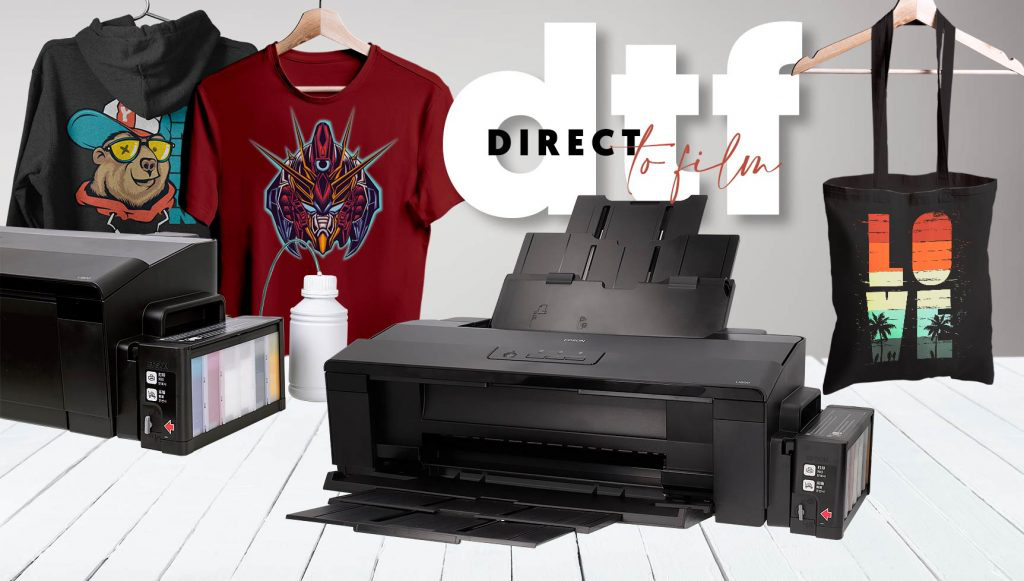
Kilde: https://www.brildor.com
DTF (Direkte til film) tryk er en relativt ny teknologi, der har vundet popularitet i beklædnings- og tekstiltrykindustrien. Det er en digital trykmetode, der giver mulighed for at printe design og mønstre på stoffer ved hjælp af en speciel type transferfilm.
Sådan fungerer DTF-udskrivning
I traditionel sublimationstryk, designet trykkes først på et transferpapir med sublimeringsblæk. Overførselspapiret påføres derefter på en bestemt type substrat, såsom polyester eller andre syntetiske stoffer, ved hjælp af en varmepresse. Varmen og trykket får blækket til at sublimere og binde sig til underlaget, resulterer i et permanent og holdbart print.
DTF udskrivning, på den anden side, bruger en speciel typeDTF -film der er belagt med et unikt klæbelag og DTF pulver. Designet printes direkte på transferfilmen ved hjælp af en DTF-printer og specialDTF blæk. Overførselsfilmen påføres derefter på stoffet ved hjælp af en varmepresse, hvor klæbelaget smelter og klæber til stoffet. Filmen pilles derefter af, efterlader designet på stoffet.
Samlet set, DTF-print er en lovende teknologi, der giver flere fordele i forhold til traditionel sublimeringsprint. I takt med at teknologien fortsætter med at udvikle sig og forbedres, det kan blive en mere populær og udbredt trykmetode i tekstil- og beklædningsindustrien.
Omkostningseffektivitet ved DTF-udskrivning

Kilde: https://www.dreamstime.com
DTF-tryk er en relativt ny teknologi, der vinder popularitet i beklædnings- og tekstiltrykindustrien. Mens DTF-print kan kræve en højere initial investering i udstyr og materialer sammenlignet med traditionel sublimeringsprint, det kan give betydelige omkostningsbesparelser i det lange løb.
En af de største omkostningsbesparende fordele ved DTF-udskrivning er dens evne til at udskrive på et bredere udvalg af stoffer, inklusive naturlige fibre og blandinger. Dette giver virksomheder mulighed for at udvide deres produktudbud og henvende sig til en bredere vifte af kunder uden at skulle investere i yderligere udstyr eller materialer.
DTF udskrivning kan også være mere omkostningseffektiv med hensyn til blækforbrug. Fordi blækket påføres direkte på transferfilmen, der er mindre spild sammenlignet med traditionel sublimeringsprint, hvor overskydende blæk kan efterlades på overførselspapiret og ikke overføres til underlaget.
Derudover, DTF print kan tilbydehurtigere ekspeditionstid og mere effektiv produktion. Udskrivningsprocessen, skæring, og at luge transferfilmen er mere strømlinet og kan udføres internt, reducere behovet for outsourcing og yderligere arbejdsomkostninger.
Holdbarhed af DTF-udskrifter

Kilde: https://www.pinterest.com.au
Imidlertid, seneste fremskridt inden for DTF-printteknologi har resulteret i mere holdbare print, der kan modstå flere vaske og slid over tid. Holdbarheden af DTF-print er i høj grad afhængig af kvaliteten af overføre film og blæk brugt, samt korrekte eftertryksteknikker.
For at sikre DTF-udskrifters levetid, Det er vigtigt at brug overføringsfilm og blæk af høj kvalitet der er designet specielt til DTF-udskrivning. Korrekte varme- og trykindstillingerunder overførselsprocessen, samt korrekte eftertryksteknikker såsom vask og tørring af tøjet iflg DTF printer producent anbefalinger, kan også være med til at øge holdbarheden af DTF prints.
Samlet set, mens holdbarheden af DTF-udskrifter kan have været en bekymring tidligere, fremskridt inden for teknologi og korrekte udskrivningsteknikker kan resultere i udskrifter, der er lige så holdbare som dem, der er skabt gennem traditionelle sublimeringstrykmetoder.
DTF udskrivning og tilpasning

Kilde: https://atlantavinylstore.com
DTF-udskrivning kan bruges til at oprette Brugerdefinerede design, logoer, og mønstre på forskellige stoftyper, inklusive naturlige fibre og blandinger. Dette giver virksomheder mulighed for at tilbyde et bredere udvalg af skræddersyede produkter, såsom t-shirts, hættetrøjer, og andre beklædningsgenstande, til deres kunder.
Evnen til at tilbyde tilpasning giver også virksomheder mulighed for at henvende sig til specifikke nicher og målmarkeder, såsom sportshold, skoler, og andre organisationer. Med DTF print, virksomheder kan skabe unikke og personlige produkter, der afspejler deres kunders branding og budskaber.
Derudover, DTF-print kan tilbyde hurtigere ekspeditionstid og mere effektiv produktion af kundetilpassede produkter. Udskrivningsprocessen, skæring, og at luge transferfilmen er mere strømlinet og kan udføres internt, reducere behovet for outsourcing og yderligere arbejdsomkostninger.
Samlet set, DTF print giver virksomheder og private mulighed for at skabe skræddersyede og personlige produkter med højkvalitets og detaljerede print. Med sin evne til at printe på en bred vifte af stoffer og tilbyde effektive produktions- og ekspeditionstider, DTF-udskrivning er en lovende teknologi for virksomheder, der ønsker at udvide deres produktudbud og henvende sig til specifikke nicher og markeder.
Faktorer at overveje, når du køber en DTF-printer

Kilde: https://www.flaticon.com
At købe en DTF-printer kan være en betydelig investering for virksomheder, der ønsker at udvide deres produktudbud og øge produktionseffektiviteten. For at sikre, at du vælger den rigtige DTF-printer til dine specifikke behov, Der er flere faktorer, der skal overvejes.
Udskriftskvalitet
Udskriftskvaliteten på en DTF-printer er en afgørende faktor at overveje ved køb. Se efter en printer, der tilbyder udskrivning i høj opløsning og nøjagtig farvegengivelse. Du kan også overveje en printer, der giver mulighed for at udskrive hvidt blæk, som kan øge farvernes livlighed på mørke stoffer.
Hastighed og produktionskapacitet
En DTF-printers hastighed og produktionskapacitet er vigtige faktorer at overveje, især hvis du planlægger at bruge printeren til højvolumenproduktion. Se efter en printer, der tilbyder hurtige udskrivningshastigheder og en stor udskrivningsseng for at maksimere produktionseffektiviteten.
Blæk og forbrugsstoffer
Kvaliteten og omkostningerne ved blæk og forbrugsstoffer er en anden vigtig faktor at overveje, når du køber en DTF-printer. Se efter en printer, der bruger blæk af høj kvalitet og forbrugsstoffer, der er specielt designet til DTF-udskrivning. Du kan også overveje omkostningerne og tilgængeligheden af erstatningsblæk og forbrugsstoffer, samt letheden ved at skifte dem ud.
Kompatibilitet
Ved køb af DTF printer, det er vigtigt at overveje dets kompatibilitet med dit eksisterende udstyr og software. Se efter en printer, der er kompatibel med dit nuværende computeroperativsystem og designsoftware, samt eventuelle varmepressere eller andet udstyr, du måtte have i forvejen.
Support og garanti
Endelig, overveje den support og garanti, som producenten tilbyder. Se efter en producent, der tilbyder omfattende kundesupport og en garanti, der dækker eventuelle potentielle problemer eller defekter med printeren.
Sammenfattende, ved køb af en DTF printer, det er vigtigt at overveje faktorer såsom udskriftskvalitet, hastighed og produktionskapacitet, blæk og forbrugsstoffer, Kompatibilitet, og support og garanti. Ved nøje at overveje
Konklusion

Kilde: https://www.pinterest.com.au
Som konklusion, DTF-print er en lovende teknologi, der giver flere fordele i forhold til traditionel sublimeringsprint, laver det en attraktiv mulighed for virksomheder, der søger udvide deres produktudbud og øge produktionseffektiviteten.
DTF-print giver mulighed for udskrivning på en bredere vifte af stoffer og producerer mere levende og detaljerede print, resulterer i unikke produkter af høj kvalitet. Derudover, DTF-print giver hurtigere ekspeditionstid og mere effektiv produktion, som kan hjælpe virksomheder med at spare tid og penge.
Når du vælger en DTF -printer, det er vigtigt at overveje faktorer som f.eks Printkvalitet, hastighed og produktionskapacitet, blæk og forbrugsstoffer, Kompatibilitet, og support og garanti. Ved at forstå fordelene og overvejelserne ved DTF-udskrivning, virksomheder kan træffe informerede beslutninger og vælge en printer, der bedst passer til deres specifikke behov.
Med sin evne til at tilbyde tilpasningsmuligheder og effektive produktionsmuligheder, DTF-tryk er en lovende teknologi for virksomheder inden for beklædnings- og tekstiltrykindustrien.


